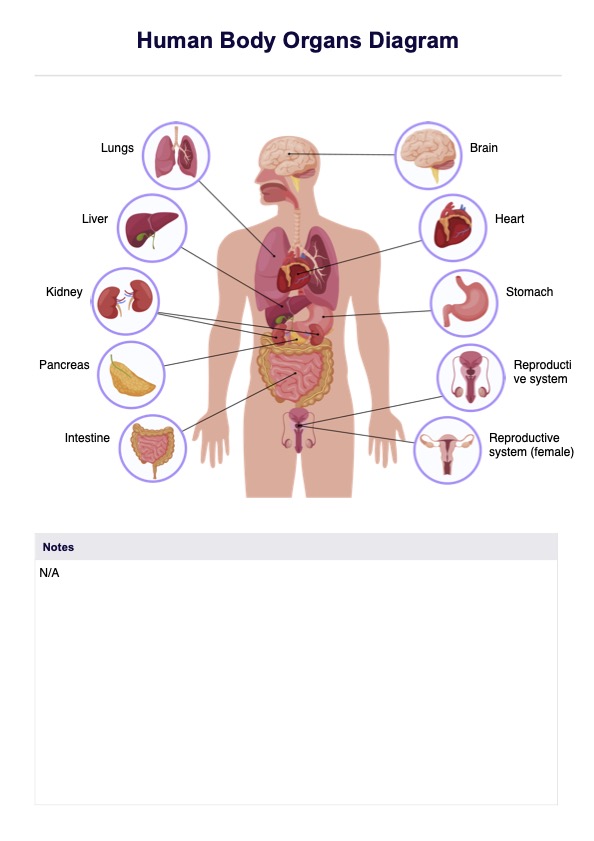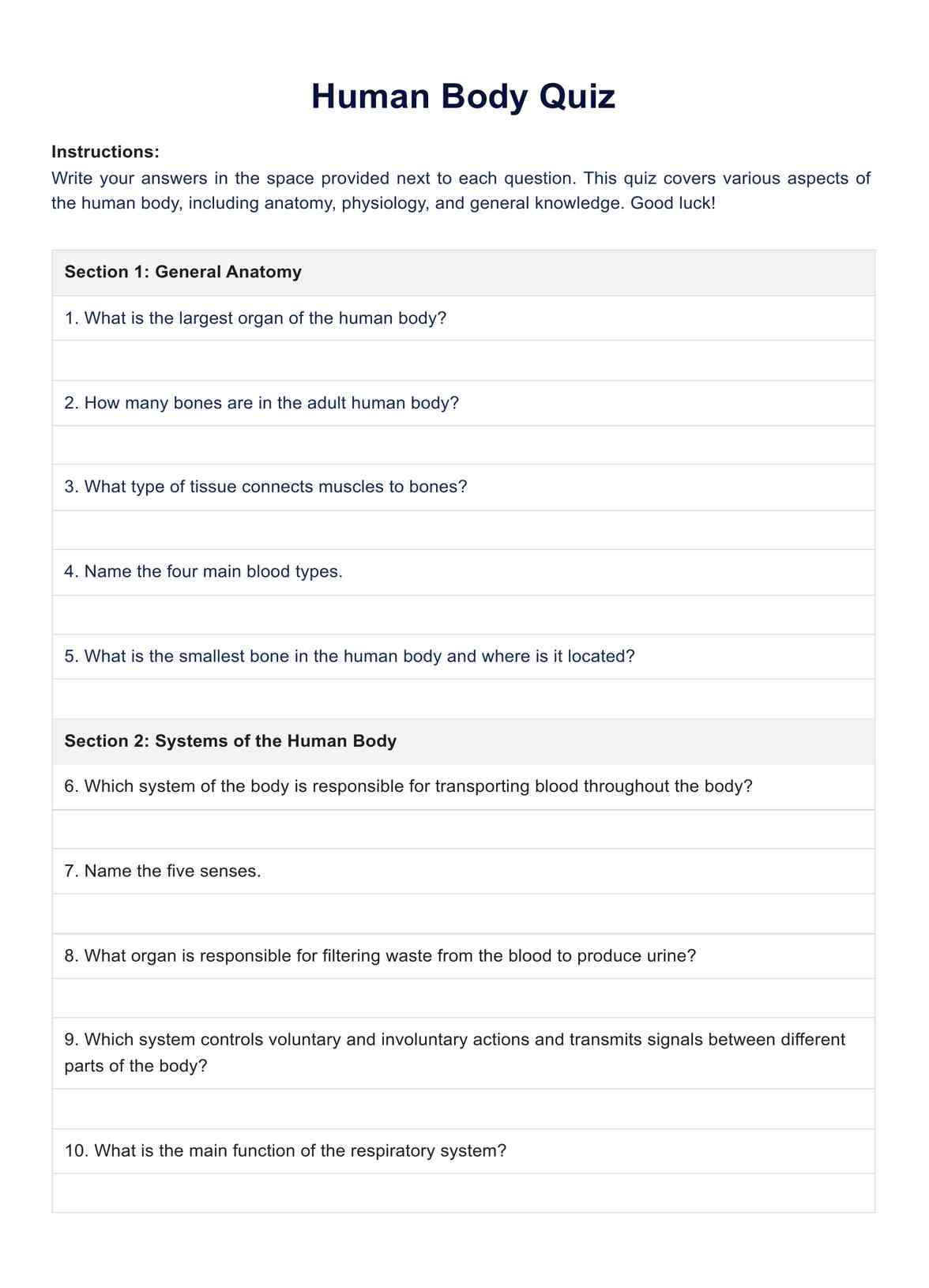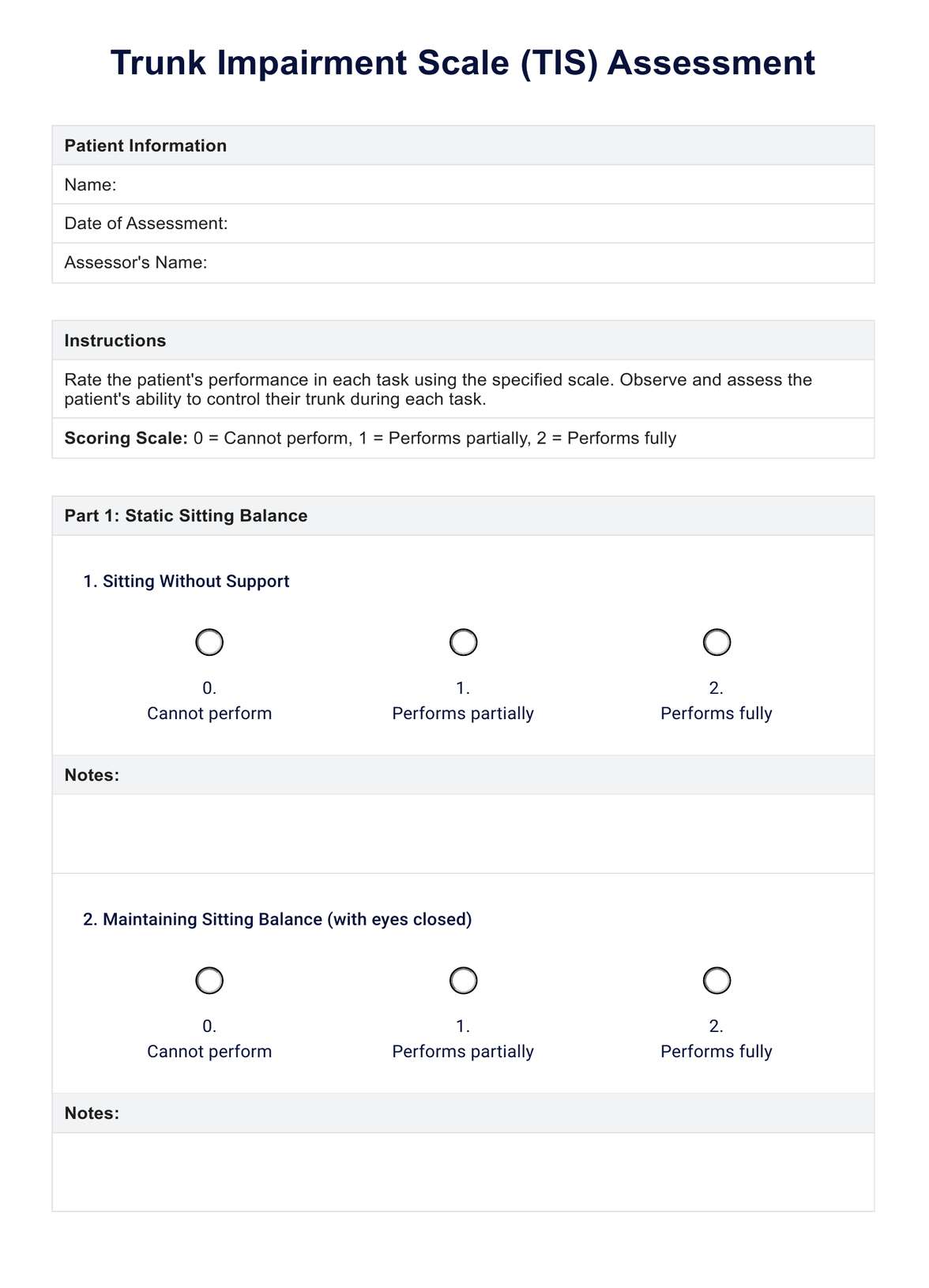Human Body Organs Diagram
Use our Human Body Organs Diagram in your practice to inform your research, educate your patient, and more.


What is a Human Body Organs Diagram?
A Human Body Organs Diagram is a visual representation that illustrates the internal structures and spatial relationships of the various vital organs within the human body. This invaluable tool is a fundamental educational resource in anatomy, biology, and healthcare.
The diagram typically outlines significant organs such as the heart, lungs, liver, kidneys, and more, providing a more specific overview of the body's intricate organ system incorporated within other bodily systems such as circulatory system, digestive system, endocrine system, integumentary system, lymphatic system, muscular system, nervous system, peripheral nervous system, reproductive system, respiratory system, and skeletal system.
These meticulously crafted diagrams depict the anatomical details and relative positions of organs, aiding in understanding their functions and interconnections. It is used in educational settings, medical institutions, and research facilities to facilitate learning and communication about the human body's complexities.
The visual nature of the diagram allows for a more precise grasp of how organs collaborate to sustain life, making them an essential reference for students, medical professionals, and anyone interested in exploring the marvels of the human body.
Through depictions of size, shape, and placement, these diagrams offer a visual roadmap for understanding the intricate network of major organs and other components of organ systems, including blood vessels, skeletal muscles, adrenal glands, digestive tract, etc., that collaborate to sustain life.
Human Body Organs Diagram Template
Human Body Organs Diagram Example
How is a Human Body Organs Diagram used?
Our Human Body Organs Diagram finds multifaceted applications across various domains, contributing significantly to education, healthcare, and research. To use our diagram, click on "Use template" to access and customize the diagram within the Carepatron platform before printing or sending a digital copy. You can also click on "Download" to get a PDF copy of the diagram.
Here's an exploration of the diverse ways these diagrams are utilized:
Educational tools
Human Body Organ Diagrams are indispensable in educational settings, serving as visual aids in anatomy classes, biology lectures, and medical training. These diagrams provide a clear and detailed overview of the body's internal structures, enabling students to grasp organ systems' complexities and functions.
Clinical reference
In healthcare, this diagram of human organs plays a crucial role as a reference tool for medical professionals. Physicians, surgeons, and healthcare practitioners use it to explain medical conditions, treatment plans, and surgical procedures to patients. Additionally, it aids in interdisciplinary communication among healthcare teams.
Research and scientific communication
Researchers and scientists use a Human Body Organs Diagram to present their findings and communicate complex concepts to a broader audience. These visual representations facilitate the dissemination of scientific knowledge and enhance understanding of physiology, pathology, and medical research.
Patient education
A Human Body Organs Diagram is a valuable resource for patient education. It helps patients comprehend their medical conditions, treatment options, and surgical procedures, fostering informed decision-making and active participation in their healthcare journey.
When are the best times to use this Human Body Organs Diagram template?
A Human Body Organs Diagram template is a versatile and powerful tool that can be employed in various contexts to enhance understanding and communication. Here are specific scenarios where utilizing this template proves most beneficial:
Educational settings
This human organs diagram template is useful in classrooms, anatomy labs, and educational institutions. Educators can integrate it into lectures to provide a visual aid for anatomy students, allowing for a more unmistakable comprehension of the relationships between organs and their functions, such as the central nervous system's function as the body's control center, to regulate body temperature or the kidney's purpose of maintaining the body's fluid balance.
Patient consultations
Healthcare professionals can leverage the Human Body Organs Diagram template during patient consultations. The visual representation enhances patient understanding when explaining medical conditions, treatment plans, or surgical procedures. This aids in fostering a collaborative approach to healthcare, as patients can actively engage in discussions about their well-being with a more precise grasp of the information presented.
Research and presentations
Researchers and scientists find value in this template when communicating their findings. Whether presenting at conferences, writing research papers, or creating educational materials, the visual impact of the diagram enhances the audience's comprehension of complex anatomical concepts. It's a valuable asset for disseminating scientific knowledge in a clear and accessible manner.
Health and wellness education
The Human Body Organs Diagram template is a powerful educational tool for community health initiatives, wellness workshops, or online health resources. It can be incorporated into materials discussing healthy lifestyle choices, the effects of habits on internal organs, and general health awareness campaigns.
Artistic and creative explorations
Beyond science and education, artists and creatives can also find inspiration in this body organs diagram. It provides a foundation for artistic projects, illustrations, or visual storytelling that involves the human body. The accurate representation of organs offers a starting point for creative expressions in various mediums.
What are the benefits of using a Human Body Organs Diagram?
A Human Body Organs Diagram offers many benefits as a powerful educational and communicative tool. Here's a closer look at the advantages of incorporating this diagram into various contexts:
Visual learning aid
A Human Body Organs Diagram can help visual learners grasp complex anatomical concepts more effectively. The visual representation enhances comprehension, making it invaluable in educational settings.
Clarity in medical communication
The diagram of human body organs provides a clear and concise means of communicating medical information for healthcare professionals. Whether discussing diagnoses, treatment plans, or surgical procedures, the visual representation inside the human body diagram fosters enhanced clarity and understanding during patient consultations.
Comprehensive understanding
The diagram facilitates a comprehensive understanding of the spatial relationships between organs within the human body. This benefit is particularly crucial in anatomy studies. It allows students, educators, and medical professionals to visualize the positioning and connections of organs in a way that static images or text alone cannot convey.
Improved patient education
Patients can better understand their health conditions, facilitating informed decision-making and active participation in their healthcare journey. It bridges the gap between medical terminology and layman's comprehension.
Enhanced memorization
Incorporating visual aids like diagrams improves information retention. When studying the human body's complexities, learners are more likely to remember details and relationships between organs when aided by a visual representation.
Multidisciplinary application
The versatility of the Human Body Organs Diagram allows its application across various disciplines. Its adaptability makes it a valuable asset in diverse professional and creative contexts.
Commonly asked questions
Human Body Organ Diagrams are invaluable for studying anatomy by providing a visual roadmap for understanding the spatial relationships and functions of organs. It makes it easier for healthcare professionals, medical students, and researchers to identify a medical problem.
In a clinical setting, Human Body Organ Diagrams are crucial for communicating medical information, explaining diagnoses, and enhancing patient understanding. Carepatron's health and wellness planner templates extend this utility by integrating organ diagrams into patient care plans, promoting comprehensive healthcare management.
Human Body Organ Diagrams come in various types, including anatomical, schematic, and system-specific diagrams. Carepatron offers diverse health and wellness planner templates, allowing users to choose and customize the type of organ diagram that best suits their educational or professional needs.















































































































